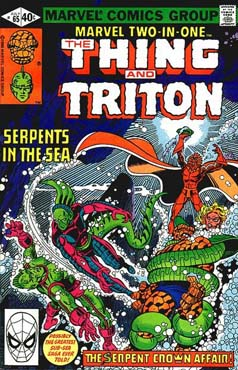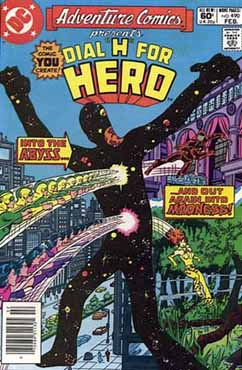Quiet yourselves and prepare for the tale told to those to dare to visit the theater at midnight, to learn of what happened that day to the noble Melas.
Having used fatigue as an excuse to slip away from his fellows, Melas takes a moment in the shadows to extricate the coded directions from his kindly Aunt Agatha. These lead him first back to his rooms to claim his greatsword (for Agathas advice indicates that there might be significant swordplay), then across the bridge to the west side of Serin and finally to a house near the Serin - Scornbul border. The central part of the structure speaks of once great wealth and taste, but the house was obviously expanded more than once, encroaching into its gardens so that now there is barely a sword's length of land between its furthest ell and its neighbors (and even that much land is luxury in this overbuilt area).
The door opens promptly at his drawing of the great clapper, and it is clear that Aunt Agatha has prepared these people - the de la Erosas - for his coming just as she prepared him to meet them. For Aunt Agatha was once a student at Ferantino University - indeed once a member of the Loremasters that govern that body - some century earlier. Never once to let a planted vine wither, she has kept the de la Erosas in her debt for generations. By her accounts none of them are accomplished in war or the arts, but have had some limited facility in the business of shipping. She has cultivated their business with a suggestion here, an enchantment there, and the de la Erosas know to whom they owe their current status. They are not exalted, certainly, but not in debt like all of their peers who lost their business to the machinations of the mercantile classes. That status and income level is quite clear to Melas the moment he enters - it is obvious that the family cannot afford the land for another such house, and so over the years has expanded this one for all the various cousins and such to share.
The man who met him, Osmundo, ushers him into a small sitting room - Melas knows that he is to draw out this man's problem, and then solve it. Permanently. After that the de la Erosas will be his eyes and ears in the community, as much in debt to him as his aunt. Well, almost as much.
Melas takes the (for him) unusual tack of being forthright and friendly. "My aunt commended you to me, Signor Osmundo, and told me I should honor the ancient ties between our houses by offering any aid or service of mine which may be useful to you."
The combination of Melas' heavily armed, rough appearance, his friendly tone and the implication that the men are more or less equals in their service to a greater lord puts the man more at ease. He ands Melas a drink while speaking. "Your aunt is, as always, a kind and gracious woman. Please extend to her our thanks for her suggestion when you next speak to her. My family is indeed in need of assistance, through circumstances that stagger the imagination and make even the stoutest of hearts quaver."
He sits to tell his tale, indicating that Melas should do the same. "The de la Erosas are a noble family whose lands are technically on the sea. The 9th Emperor granted my ancestors not just some small estates but the rights to several trading routes between the empire and the islands to the north and east. The first Osmundo de la Erosas was a merchant captain, you see, who did valiant duty breaking the siege of Wistre, running his ships at night past the Chrichtonian fleet. In any event, from that day forward the de la Erosas fortune was assured due to the lucrative nature of the routes."
He sighed heavily, "Alas, things change, as all things do. Some of my ancestors were not clever merchants, others fell prey to pirates, and the copper and iron veins on two of the islands whose routes we controlled played out. The family became desperate, some took their own lives, and our land holdings were whittled away to gnomish creditors bit by bit. There were even rumors of some distant Eroasa kin turning to piracy. Still, it was not until my twice great grandfather's time - when the only land holding we had remaining was this manor - that we had to license away some of the routes. Still, we refused to part with them entire, licensing them to tallfolk merchants as dowries for some of our distaff cousins.
He pours himself another glass, offering some more of the Madeira to his guest "Shortly thereafter we had the good grace to meet with your aunt, and her keen advice has prevented any further loss of estates. Nonetheless there are still Erosas kinfolk who ply Erosas shipping lanes. And there are certain crimes that even the distance of a marriage would not protect us. . . "
Before he can make plain what is being so broadly hinted, there is a rapid, pounding knock on the door. Before either man can act a small blonde, eight year old bundle of energy flies into the room. "Papa, papa, there's a big sword and a little sword by the door! Is there is a knight here! Or monsters! Or a dashing… OH!" the cherubic, child stops dead with a look of shock bordering upon horror at Melas' appearance.
"Ema, this is lord Balisca, nephew of the lady Vienne." The girls eyes grow impossibly wider at her father's words, and she dips into a proper courtesy. Still, her eyes leave his hunch and misshapen ears only for a moment.
"Welcome to our house, lord Balisca." She pipes after a second, then glances at her father, "Is he here to fight the Blind Pirates?"
"This is a matter which must be handled delicately, I take it. Wouldn't want the wrong people to draw the wrong conclusions. Tell me about the Blind Pirates, Signor Osmundo."
The little girls eyes light up at this statement, only to have her face fall when her father pushes her gently out of the room with a "Now then, Lord Belasca isn't to be bothered with your little fancies. Out, out, out, or you won't get taken to the play this weekend."
Once she is gone he closes and locks the door, "She's enamored with the plays and stories of pirates, Signor Melas. But she might not be wrong for that. My cousin, Huera Andres, has become most peculiar since her husband's death. She has entered the most profound state of mourning for the last half year - all the shutters of their apartments in Scornbul have been closed, she only goes out at night, and even then she is all in black, tatters and a veil. She was never a healthy woman but the weight has fallen off of her, and the cold of winter must have gotten into her joints to give her such a hunched . . ." he pauses here, glances away from Melas and then plows on, "Plus, all her staff discharged and replaced by rough hewn men, sailors who once worked for her husband she says, but all are blind. These are the Blind Pirates of my daughter's fancies."
"The blind servants handle her day to day affairs, when they aren't begging in the street or getting drunk in taverns. I don't know if she pays them or not. But there are rumors circulating. Terrible rumors. Not many yet, but it won't be long before the purveyors of penny shows in Scornbul make light of them. The least is that the mourning is a front and she has been holding orgies for the beggars and penny hangmen in her apartments. Scandalous, but such a derangement would only on her head. But her blind agents, well, one has scars on his wrists, hidden in the lace cuffs and waistcoats she dresses them in for her formal affairs, as if you could hide a mule with a horse's mane. Manacle marks, or I'm a fool, and they've long knives at their belts. So her new servants might truly be pirates, meaning that Signor Andres was not an honest man. But combine her mad behavior with the rumors of pirates, add even a whiff of things best left unsaid and it could destroy us all." He is visibly scared at this point, having moved from being concerned for his cousin to irate at her to this fear of losing everything to a chaos tainted family member.
"If you would, Signor Melas, could you step in? Look in on her and her apartments? Confirm which of the rumors are true? And spirit her to us if it is the least of them?" it is clear that there is a lot Osmundo is not saying - that if the worst is true, then Hurea should disappear without an investigation being mounted that might make the taint public. There is some shame in him, but it is mostly for his weakness in not being able to act on this personally, or to bring it to the paladins and have the family face a full scrutiny.
Melas agrees, and turns the conversation to other matters -- in particular he'd like to know if Osmundo knows anything about that repellent Victor chap he had the duel with.
Only in the abstract - Victor d'Berengere has a reputation as a patron of the arts who supports several painters in the city, and also as being a man with a harsh tongue and an easily wounded pride. He has killed at least three men in duels, and there are rumors, scurrilous, base rumors, that at least one of those was an arranged killing using the duel as a cover.
He pays his respects and leave before midnight. Wary of being jumped by irate duelists or Chaos beasts on the way home, Melas goes back to his room and, using his best stationery, writes a long and vapid letter of greetings and trivial family news, which he signs with his Aunt's name and scent with some suitably old-lady perfume.





















